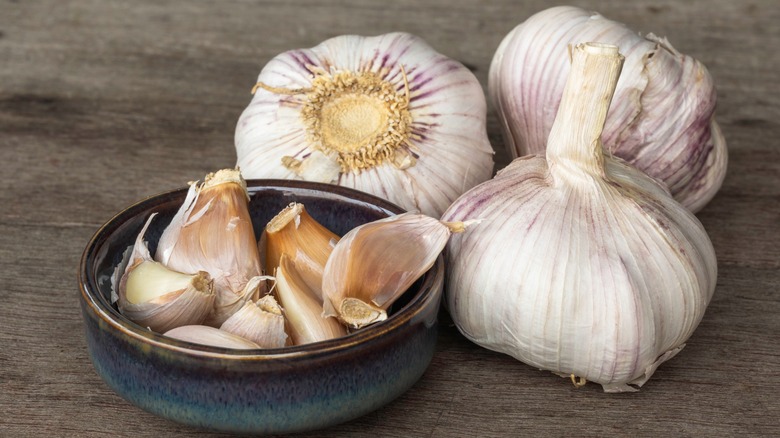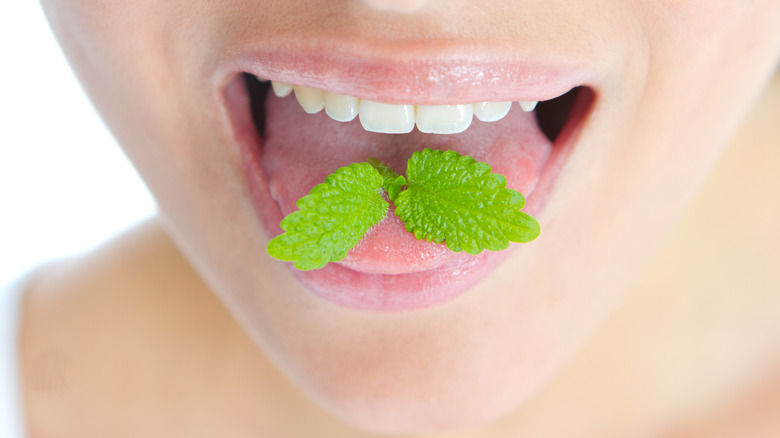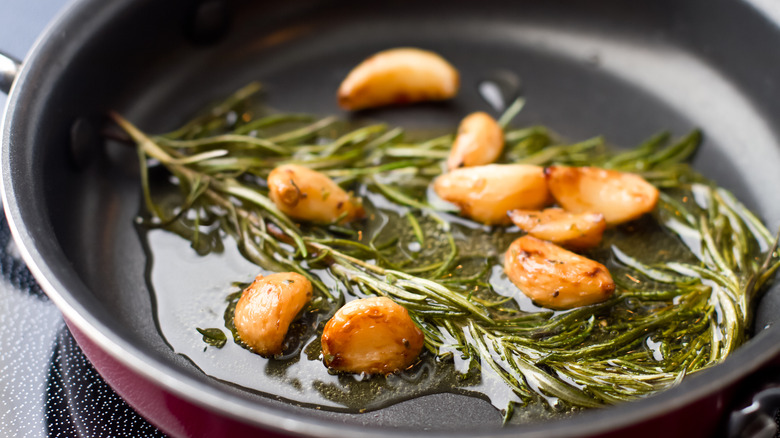The One Basic Ingredient That Eliminates Garlic Breath
Even if you love adding garlic to your food, you may not love the after effects; namely, garlic breath. Similarly to chopping or mincing garlic, chewing it also catalyzes and releases its sulfuric compounds. The four main ones are diallyl disulfide, allyl mercaptan, allyl methyl disulfide, and allyl methyl sulfide, with the latter being slowest to metabolize. In fact, studies have shown that allyl methyl sulfide release peaks around 30 minutes after consumption, leaving you smelling like garlic potentially for hours.
Fortunately, several foods have the ability to hasten the de-stinking process, if not cancel out the smell entirely. Research conducted by Ohio State University shows that casein micelle-whey protein, found in yogurt, performs best when it comes to binding with and effectively neutralizing garlic's stinky compounds. As such, eating yogurt immediately after consuming garlic may reduce odorous breath by as much as 99%. So, if you eat a lot of cloves, you may want to keep a good stock of the dairy product in your fridge.
Garlic breath could be minimized by other simple foods
In the event you don't have yogurt on hand, no worries. Researchers have found a few other foods to be somewhat effective in combating garlic breath, though none of them performed as well as high-protein yogurt.
Mint leaves, for instance, contain rosmarinic acid, which reduces garlic's sulfuric compounds much in the same way that casein micelle-whey protein does. Apple and lettuce follow mint in terms of effectiveness, each containing a phenolic compound called quercetin. Interestingly, green tea, which you might expect to work well on the deodorizing front, has little effect on garlic breath.
Of course, as mentioned previously, these foods must be eaten immediately after you've consumed garlic if they're going to have any effect on your breath. In other words, you might consider pairing a garlic-heavy meal with side dishes containing yogurt, mint, apple, or lettuce, such as a salad with your favorite types of lettuce, a yogurt-based dip, or even an apple-centric dessert. Because, really, garlic breath is no reason to end the party early.
Reduce the risk of garlic breath by changing your cooking method
Although you can easily solve garlic breath by following the meal up with yogurt or mint leaves, you can also get a headstart on addressing the problem by changing the way you cook your garlic in the first place. For example, instead of sauteeing garlic, you might consider frying it.
Frying garlic brings it to a high enough temperature that its sulfuric compounds start to break down, in turn reducing the smell that garlic gives off. However, when trying this method, you should keep in mind that frying can also make garlic's taste more subtle, even sweet. That being said, frying garlic too intensely can burn it as well, causing a bitter taste that could rival the original pungency.
For a more manageable cooking process, you can try roasting garlic in the oven. This not only softens and sweetens it, but also helps break down those sulfuric compounds before they ever make it to your mouth. Be gone, garlic breath!



